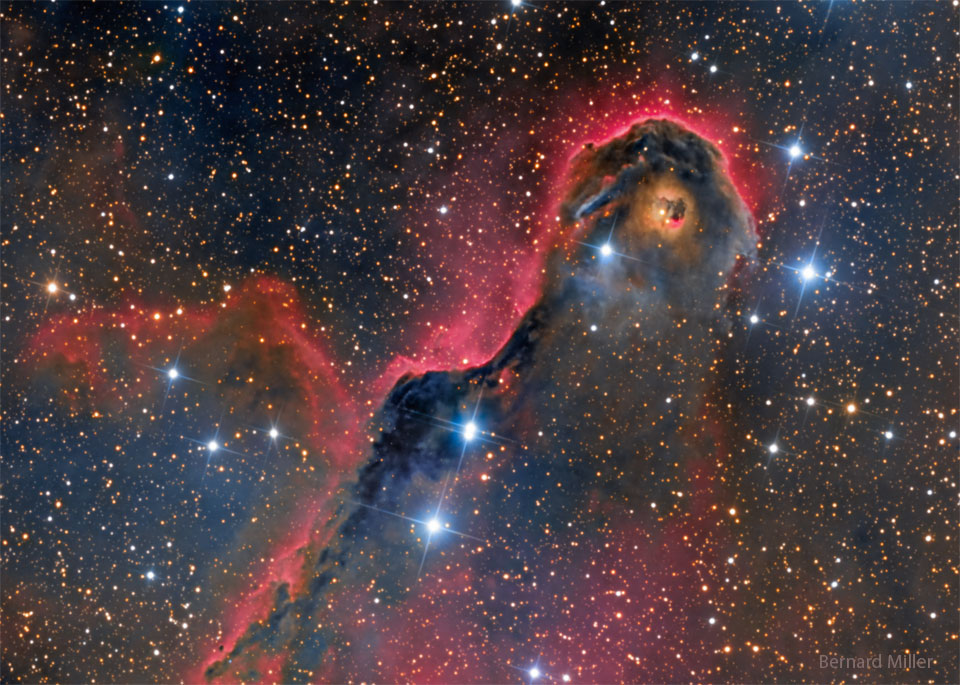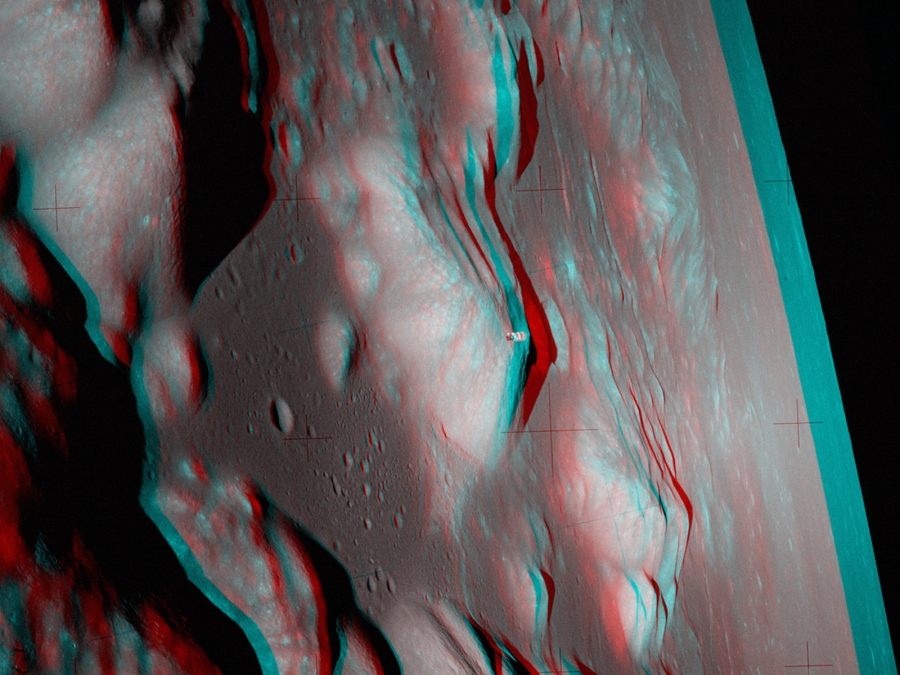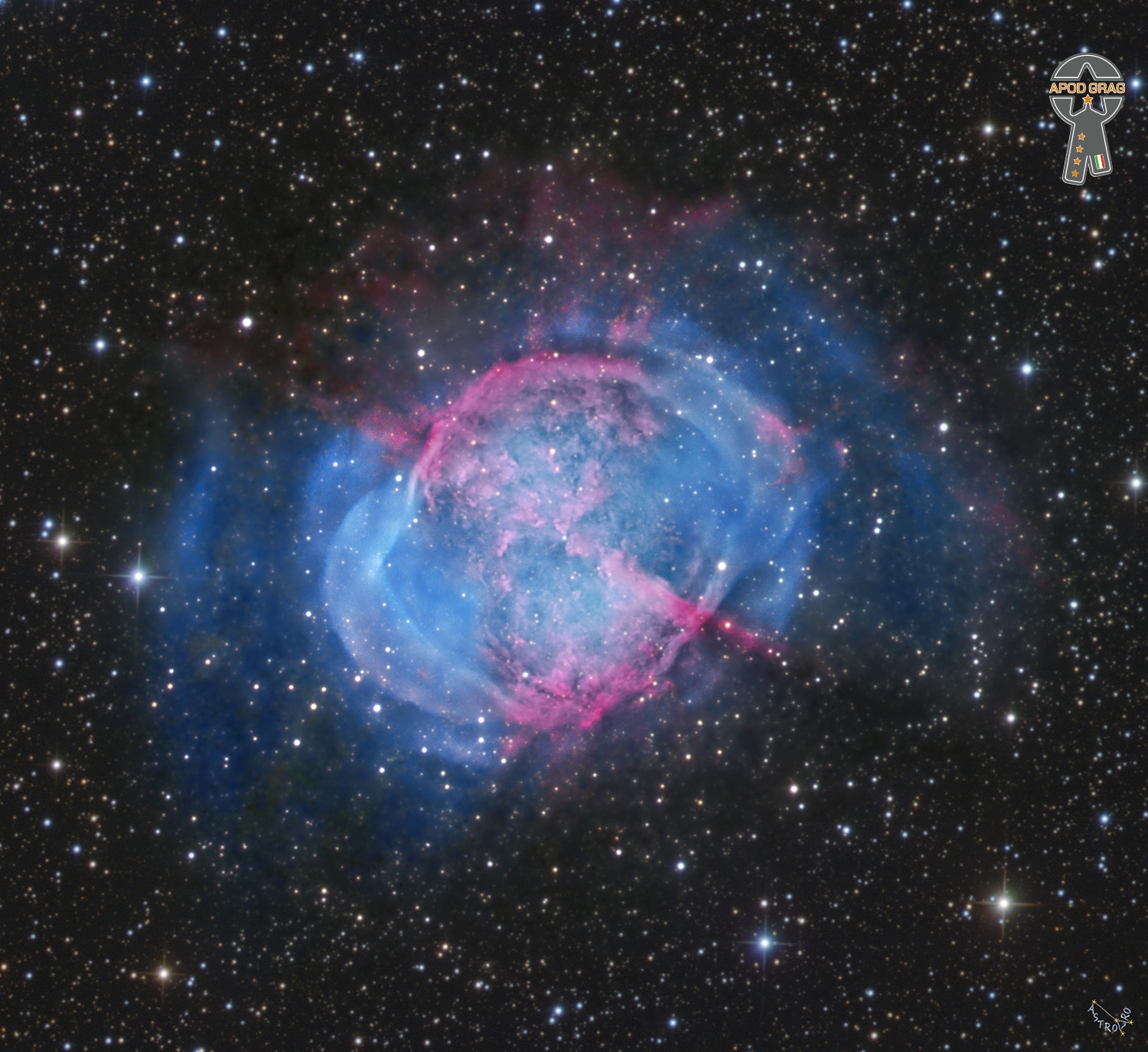Blog
Known to some as the Elephant’s Trunk Nebula, parts of gas and dust clouds of this star formation region may appear to take on foreboding forms, some nearly human. The only real monsterhere, however, is a bright young star too far from Earth to hurt us. Energetic light from this star is eating away the dust of the dark cometary globule near the top of the featured image. Jets and winds of particles emitted from this star are also pushing away ambient gas and dust. Nearly 3,000 light-years distant, the relatively faint IC 1396 complex covers a much larger region on the sky than shown here, with an apparent width of more than 10 full moons.

Forrest Richard Betts (born December 12, 1943 West Palm Beach, FL) is an American guitarist, singer, songwriter, and composer best known as a founding member of The Allman Brothers Band.
Early in his career, he collaborated with Duane Allman, introducing melodic twin guitar harmony and counterpoint which “rewrote the rules for how two rock guitarists can work together, completely scrapping the traditional rhythm/lead roles to stand toe to toe”. Following Allman’s death in 1971, Betts assumed sole lead guitar duties during the peak of the group’s commercial success in the mid-1970s. Betts was the writer and singer on the Allmans’ hit single “Ramblin’ Man“. He also gained renown for composing instrumentals, with one appearing on most of the group’s albums, including “In Memory of Elizabeth Reed” and “Jessica” (which was later used as the theme to Top Gear).
The band went through a hiatus in the late 1970s, during which time Betts, like many of the other band members, pursued a solo career and side projects under such names as Great Southern and The Dickey Betts Band. The Allman Brothers reformed in 1979, with Dan Toler taking the second guitar role alongside Betts. In 1982, they broke up a second time, during which time Betts formed the group Betts, Hall, Leavell and Trucks, which lasted until 1984. A third reformation occurred in 1989, with Warren Haynes now joining Betts on guitar. Betts would be ousted from the band in 2000 over a conflict regarding Betts’s continued drug and alcohol use; he would never play with them again and has not since appeared with any former band members for reunions or side projects. He remains (alongside Jaimoe) one of only two living founders of the Allman Brothers Band.
He was inducted with the band into the Rock and Roll Hall of Fame in 1995 and also won a best rock performance Grammy Award with the band for “Jessica” in 1996. Betts was ranked No. 58 on Rolling Stone‘s 100 Greatest Guitarists of All Time list in 2003, and No. 61 on the list published in 2011.
more...Alejandro Neciosup Acuña (born December 12, 1944), known professionally as Alex Acuña, is a Peruvian-American drummer and percussionist.
Born in Pativilca, Peru, Acuña played in local bands such as La Orquesta de los Hermanos Neciosup from the age of ten. Acuña then followed his brothers and moved to Lima as a teenager. At the age of eighteen he joined the band of Perez Prado, and in 1965 he moved to San Juan, Puerto Rico. In 1974 Acuña moved to Las Vegas, working with artists such as Elvis Presley, The Temptations, and Diana Ross, and the following year he joined the jazz-fusion group Weather Report, appearing on the albums Black Market and Heavy Weather. While in New York City, Acuña recorded several songs under RCA records. Acuña decided to leave because of the genre limitations placed on him, in which RCA records only had him play Latin music.
Acuña left Weather Report in 1978, and became a session musician in California, recording and playing live with (amongst many others) Paul McCartney, Joni Mitchell, Ella Fitzgerald, Elvis Presley, Michael Jackson, Chick Corea, Whitney Houston, Plácido Domingo, former Weather Report bandmates Wayne Shorter and Joe Zawinul, Herbie Hancock, Carlos Santana, Antonio Carlos Jobim, Beck, Roberta Flack, U2, Al Jarreau and Marcos Witt. He can be found on recordings by musicians as culturally diverse as Lee Ritenour, Johnny Clegg, Roy Orbison, YellowJackets, Lalo Schifrin, Milton Nascimento, Don Grusin, Dave Grusin, The Brecker Brothers, Arturo Sandoval, Vladislav Sendecki, Paquito d’Rivera, Gonzalo Rubalcaba, Brad Mehldau, BoDeans, Paco de Lucia, John Patitucci, Sadao Watanabe, Lyle Mays, Diana Ross, Sérgio Mendes, Robbie Robertson, Jackson Browne, Bette Midler, Jennifer Nettles, Christina Aguilera, Seal and Chris Botti.
more...Anthony Tillmon Williams (December 12, 1945 – February 23, 1997) was an American jazz drummer.
Williams first gained fame as a member of Miles Davis‘ “Second Great Quintet“, and later pioneered jazz fusion with Davis’ group and his own combo, the Tony Williams Lifetime. In 1970, music critic Robert Christgau described him as “probably the best drummer in the world”. Williams was inducted into the Modern Drummer Hall of Fame in 1986.
Williams was born in Chicago and grew up in Boston. He is of African, Portuguese, and Chinese descent. He studied with drummer Alan Dawson at an early age, and began playing professionally at the age of 13 with saxophonist Sam Rivers. Saxophonist Jackie McLean hired Williams when he was 16.
At 17 in 1963 Williams gained attention by joining Miles Davis in what was later dubbed Davis’s Second Great Quintet. Williams was a vital element of the group, called by Davis in his autobiography “the center that the group’s sound revolved around.” His playing helped redefine the role of the jazz rhythm section through the use of polyrhythms and metric modulation. Meanwhile, he recorded his first two albums as leader for Blue Note label, Life Time (1964) and Spring (1965). He also recorded as a sideman for the label including, in 1964, Out to Lunch! with Eric Dolphy and Point of Departure with Andrew Hill. Williams lived and taught in the San Francisco Bay Area until his death from a heart attack following routine gallbladder surgery. One of his final recordings was The Last Wave by the trio known as Arcana, a release organized by Bill Laswell.
more...Grover Washington Jr. (December 12, 1943 – December 17, 1999) was an American jazz-funk and soul-jazz saxophonist. Along with Wes Montgomery and George Benson, he is considered by many to be one of the founders of the smooth jazz genre. He wrote some of his material and later became an arranger and producer.
Throughout the 1970s and 1980s, Washington made some of the genre’s most memorable hits, including “Mister Magic”, “Reed Seed”, “Black Frost”, “Winelight”, “Inner City Blues”, “Let it Flow (For ‘Dr. J’)” and “The Best is Yet to Come”. In addition, he performed very frequently with other artists, including Bill Withers on “Just the Two of Us“, Patti LaBelle on “The Best Is Yet to Come” and Phyllis Hyman on “A Sacred Kind of Love”. He is also remembered for his take on the Dave Brubeckclassic “Take Five“, and for his 1996 version of “Soulful Strut“.
Washington was born in Buffalo, New York, United States, on December 12, 1943. His mother was a church chorister, and his father was a collector of old jazzgramophone records and a saxophonist as well, so music was everywhere in the home. He grew up listening to the great jazzmen and big band leaders like Benny Goodman, Fletcher Henderson, and others like them. At the age of 8, Grover Sr. gave Jr. a saxophone. He practiced and would sneak into clubs to see famous Buffalo blues musicians. His younger brother, drummer Daryl Washington, would follow in his footsteps, he also had another younger brother named Michael Washington, who was an accomplished Gospel Music organist who mastered the Hammond B3 organ. He was part of a vocal ensemble, The Teen Kings, which included Lonnie Smith.
more...Toshiko Akiyoshi (秋吉敏子 or 穐吉敏子, Akiyoshi Toshiko, born 12 December 1929) is a Japanese–American jazz pianist, composer, arranger, and bandleader. Akiyoshi received fourteen Grammy Award nominations and was the first woman to win Best Arranger and Composer awards in Down Beat magazine’s annual Readers’ Poll. In 1984, she was the subject of the documentary Jazz Is My Native Language. In 1996, she published her autobiography, Life with Jazz, and in 2007 she was named an NEA Jazz Master by the U.S. National Endowment for the Arts.
Akiyoshi was born in Liaoyang, Manchuria, to Japanese colonists, the youngest of four sisters. In 1945, after World War II, Akiyoshi’s family lost their home and returned to Japan, settling in Beppu. A local record collector introduced her to jazz by playing a record of Teddy Wilson playing “Sweet Lorraine.” She immediately loved the sound and began to study jazz. In 1952, during a tour of Japan, pianist Oscar Peterson discovered her playing in a club on the Ginza. Peterson was impressed and convinced record producer Norman Granz to record her. In 1953, under Granz’s direction, she recorded her first album with Peterson’s rhythm section: Herb Ellis on guitar, Ray Brown on double bass, and J. C. Heard on drums. The album was released with the title Toshiko’s Piano in the U.S. and Amazing Toshiko Akiyoshi in Japan.
Akiyoshi studied jazz at the Berklee School of Music in Boston. In 1955, she wrote a letter to Lawrence Berk, asking him to give her a chance to study at his school. After a year of wrangling with the State Department and Japanese officials, Berk was given permission for Akiyoshi to enroll. He offered her a full scholarship, and he mailed her a plane ticket to Boston. In January 1956, she became the first Japanese student at Berklee. Soon after, she appeared as a contestant on the 18 March 1956 broadcast of the CBS television panel show What’s My Line? In 1998, she was awarded an honorary doctorate of music from Berklee, by then known as the Berklee College of Music.
more...Michael “Dodo” Marmarosa (December 12, 1925 – September 17, 2002) was an American jazz pianist, composer, and arranger.
Originating in Pittsburgh, Pennsylvania, Marmarosa became a professional musician in his mid-teens, and toured with several major big bands, including those led by Tommy Dorsey, Gene Krupa, and Artie Shaw into the mid-1940s. He moved to Los Angeles in 1945, where he became increasingly interested and involved in the emerging bebop scene. During his time on the West Coast, he recorded in small groups with leading bebop and swing musicians, including Howard McGhee, Charlie Parker, and Lester Young, as well as leading his own bands.
Marmarosa returned to Pittsburgh due to health reasons in 1948. He began performing much less frequently, and had a presence only locally for around a decade. Friends and fellow musicians had commented from an early stage that Marmarosa was an unusual character. His mental stability was probably affected by being beaten into a coma when in his teens, by a short-lived marriage followed by permanent separation from his children, and by a traumatic period in the army. He made comeback recordings in the early 1960s, but soon retreated to Pittsburgh, where he played occasionally into the early 1970s. From then until his death three decades later, he lived with family and in veterans’ hospitals.
more...The Dumbbell Nebula is a planetary nebula located in the constellation Vulpecula at about 1227 light years. It was discovered by Charles Messier on 12 July 1764 and is the first observed planetary nebula in the history of astronomy. It is number 27 in his catalogue.
This object is particularly bright and has a very large apparent diameter, with the brightest part being 1/5 that of the Moon. With an expansion rate of 6.8 arcseconds per century, its age is estimated at 3 000 to 4 000 years.
The central star (the origin of the nebula) has an apparent magnitude of 13.5, which makes it difficult for an amateur astronomer to observe. It is a white dwarf with a very hot blue colour (85 000 K).
The peculiar shape of the luminous part of the nebula has earned it the name Dumbbell Nebula.
more...Looking at this nebula, we can see the end of our own solar system in 5 billion years.
Alfred McCoy Tyner (December 11, 1938 – March 6, 2020) was an American jazz pianist and composer known for his work with the John Coltrane Quartet (from 1960 to 1965) and his long solo career afterwards.
He was an NEA Jazz Master and five-time Grammy award winner. Unlike many of the jazz keyboardists of his generation, Tyner very rarely incorporated electric keyboards or synthesizers into his work. Tyner has been widely imitated, and is one of the most recognizable and influential pianists in jazz history.
more...Willie Mae Thornton (December 11, 1926 – July 25, 1984), better known as Big Mama Thornton, was an American singer and songwriter of the blues and R&B genres. She was the first to record Leiber and Stoller‘s “Hound Dog“, in 1952, which became her biggest hit, staying seven weeks at number one on the Billboard R&B chart in 1953 and selling almost two million copies. Thornton’s other recordings included the original version of “Ball and Chain“, which she wrote.
more...Dámaso Pérez Prado (December 11, 1916 – September 14, 1989)[nb 1]was a Cuban bandleader, pianist, composer and arranger who popularized the mambo in the 1950s.[2] His big band adaptation of the danzón-mambo proved to be a worldwide success with hits such as “Mambo No. 5“, earning him the nickname “King of the Mambo”. In 1955, Prado and his orchestra topped the charts in the US and UK with a mambo cover of Louiguy‘s “Cherry Pink (and Apple Blossom White)“. He frequently made brief appearances in films, primarily of the rumberas genre, and his music was featured in films such as La Dolce Vita.
more...more...https://youtu.be/CiXztRrljPQ
Fifty years ago the scene was recorded by Apollo 17 mission commander Eugene Cernan on December 11, 1972, one orbit before descending to land on the Moon. The stereo anaglyph was assembled from two photographs (AS17-147-22465, AS17-147-22466) captured from his vantage point on board the Lunar Module Challenger as he and Dr. Harrison Schmitt flew over Apollo 17’s landing site in the Taurus-Littrow Valley. The broad, sunlit face of the mountain dubbed South Massif rises near the center of the frame, above the dark floor of Taurus-Littrow to its left. Piloted by Ron Evans, the Command Module America is visible in orbit in the foreground against the South Massif’s peak. Beyond the mountains, toward the lunar limb, lies the Moon’s Mare Serenitatis.

more...
Melbourne Robert Cranshaw (December 3, 1932 – November 2, 2016) was an American jazz bassist. His career spanned the heyday of Blue Note Records to his recent involvement with the Musicians Union. He is perhaps best known for his long association with Sonny Rollins. Cranshaw performed in Rollins’s working band on and off for over five decades, starting with a live appearance at the 1959 Playboy jazz festival in Chicago and on record with the 1962 album The Bridge.
Cranshaw died at the age of 83 on November 2, 2016, in Manhattan, New York, from Stage IV cancer.
more...Pops Mohamed (born Ismail Mohamed 12-10-1949) is a South African multi-instrumentalist, jazz musician and producer.
Born in Benoni, Gauteng, Pops Mohamed had a career in music that was the logical outcome of an early exposure at Dorkay House to the likes of Abdullah Ibrahim and Kippie Moeketsi. Mohamed’s father was a Muslim of Portuguese and Indian heritage and his mother was of Xhosa people and Khoisan heritage. He grew up in the Indian community of Johannesburg. He started his first band The Valiants, at the age of 14. Known by fans as the “Minister of Music”, he plays a wide variety of instruments: African mouth bow, bird whistle, berimbau, didgeridoo, guitar, keyboard, kora, and the thumb piano. He is also known for his wide range of musical styles which include kwela, pop, and soul. He produced Finding One’s Self, the late Moses Taiwa Molelekwa‘s award-winning album.
Pops has also performed regularly with and sits on the board of the Johannesburg Youth Orchestra Company
more...Ray Willis Nance (December 10, 1913 – January 28, 1976) was an American jazz trumpeter, violinist and singer. He is best remembered for his long association with Duke Ellington and his orchestra.
Nance was the leader of his own band in Chicago from 1932 to 1937. Then, he worked with Earl Hines from 1937 to 1939; and from 1939 to 1940 he worked with Horace Henderson.
Ellington hired Nance to replace trumpeter Cootie Williams, who had joined Benny Goodman, in 1940. Nance’s first recorded performance with Ellington was at the Fargo, North Dakota ballroom dance. Shortly after joining the band, Nance was given the trumpet solo on the earliest recorded version of “Take the “A” Train“, which became the Ellington theme. Nance’s “A Train” solo is one of the most copied and admired trumpet solos in jazz history. Indeed, when Cootie Williams returned to the band more than twenty years later, he would play Nance’s solo on “A Train” almost exactly as the original.
more...More Posts
- Sade
- Spike Robinson
- World Music Trio Mandili
- Daily Roots Beres Hammond
- MLK Courage
- Commemorating MLK Day 2024
- Cosmos Vela constellation
- Captain Beefheart
- Queen Ida
- Earl Hooker
- Gene Krupa
- Free Ukraine Dakhabrakha
- Daily Roots Bob Marley
- Cosmos Aurora Iceland
- Steve Jordan
- Kenny Wheeler
- Allen Toussaint
- Grady Tate
- World Music Hrdza
- Daily Roots The Abyssinians

